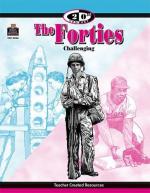|
This section contains 176 words (approx. 1 page at 300 words per page) |

|
During the 1930s and World War II, organized labor made progress on many fronts. Various labor unions also formed an alliance with the Democratic Party, then in control, and promoted legislation and government regulation to cement these gains. However, in the l946 election the Republican Party won control of Congress and set about to eliminate or roll back what they perceived to be the excessive power of labor unions. The Republican congress passed the Taft-Hartley Act over the veto of President Harry S Truman, reducing or eliminating many labor union advantages provided for in the National Labor Relations Act of 1935. These included the unconditional closed shop; the checkoff system, which enabled unions to collect dues from all employed members; the unconditional right to strike at any time; and immunity from employer lawsuits over breaches of contract and strike damages.
Sources: Melvyn Dubofsky and...
|
This section contains 176 words (approx. 1 page at 300 words per page) |

|




